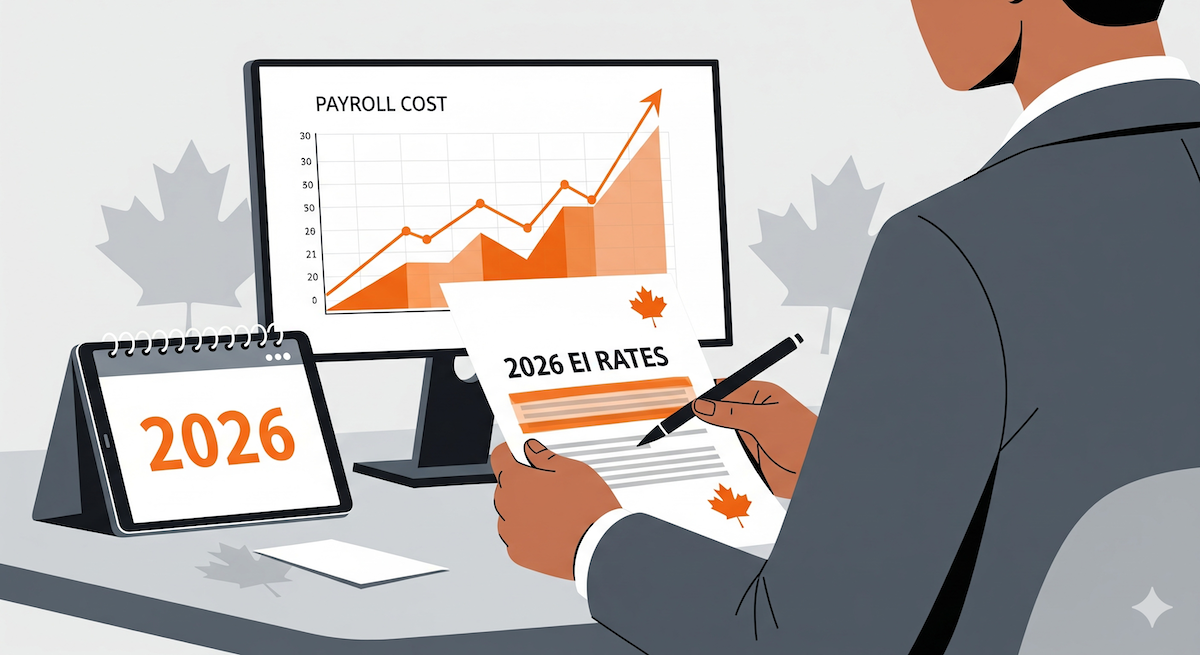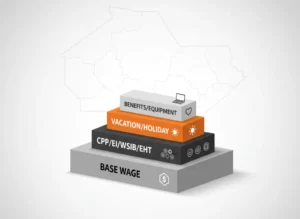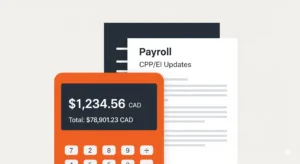As we head into the final quarter of 2025, it’s time for Ontario businesses to start planning for the year ahead. A key piece of that puzzle is understanding the payroll changes announced by the federal government. The Canada Employment Insurance Commission has just released the new Employment Insurance (EI) premium rates and maximums for 2026, and the details will impact your budget and your employees’ paycheques.
While the premium rate itself sees a slight dip, an increase in the maximum insurable earnings means that both employers and employees will be contributing more overall. Let’s break down what’s changing and how you can prepare.
What Are the 2026 EI Premium Rates?
On September 12, 2025, the federal government announced a minor decrease in the EI premium rate. For 2026, the employee rate will be set at $1.63 per $100 of insurable earnings. This is a one-cent reduction from the 2025 rate of $1.64.
For employers, who pay 1.4 times the employee rate, the new premium will be $2.28 per $100 of insurable earnings.
This small rate decrease is welcome news, but it’s only part of the story. The other critical component is the Maximum Insurable Earnings (MIE), which is the ceiling for earnings on which EI premiums are paid.
Maximum Insurable Earnings Increase for 2026
The government has increased the MIE for 2026 to $68,900, up from $65,700 in 2025.
This is a significant jump that reflects the annual indexing to wage growth. Because this income ceiling has been raised, even with the slightly lower premium rate, the total annual contribution will go up for anyone earning at or above the new maximum.
Here’s how the maximum annual contributions break down:
- Maximum Employee Contribution: $1,123.07 (an increase of $45.59 from 2025)
- Maximum Employer Contribution: $1,572.30 per employee (an increase of $63.83 from 2025)
“While the slight drop in the EI premium rate seems like a cost-saving measure, the higher Maximum Insurable Earnings threshold means businesses need to budget for increased payroll expenses in 2026.”
This increase in total contributions is an important factor for financial forecasting. For businesses with multiple employees earning at or above the MIE, the rise in employer-paid premiums can add up quickly.
Why Are These Numbers Changing?
Each year, the Canada Employment Insurance Commission (CEIC) sets the premium rate based on a seven-year break-even forecast. The goal is to ensure that the EI Operating Account will balance out over the long term, taking into account projected revenues and expenditures.
The 2026 rate of $1.63 is the rate the Senior Actuary has determined will balance the account by the end of 2032. The adjustment to the MIE is a more routine change, as it is indexed annually to keep pace with the growth in average Canadian wages. This ensures the EI program can provide benefits that are relative to current income levels.
What Ontario Employers Should Do Next
Staying ahead of payroll changes is crucial for compliance and budgeting. With these new 2026 EI rates confirmed, it’s time to take clear, proactive steps to ensure a smooth transition. Here’s what we recommend:
- Update Your Payroll Systems: Connect with your payroll software provider or internal payroll team to confirm when they will be updating their systems with the 2026 EI rates and the new MIE. Ensure your first payroll run of the new year calculates deductions correctly to avoid compliance issues.
- Revise Your 2026 Budget: Factor the increased maximum employer contributions into your 2026 financial planning. Calculate the impact based on the number of employees earning at or above the new $68,900 threshold. This will help you avoid any surprises in your year-over-year labour costs.
- Communicate with Your Team: While not mandatory, it’s good practice to inform your employees about the upcoming changes. A brief note in a company-wide memo or with their final paystub of 2025 can help explain the change in their deductions and show that you are transparent about payroll matters.
Navigating annual payroll adjustments is a core part of running a compliant and efficient business. These changes, though seemingly small, have a real impact on your bottom line and your employees’ take-home pay.
Need help navigating HR changes? Book your free HR audit today or speak with our team about how Divino can support your business.




